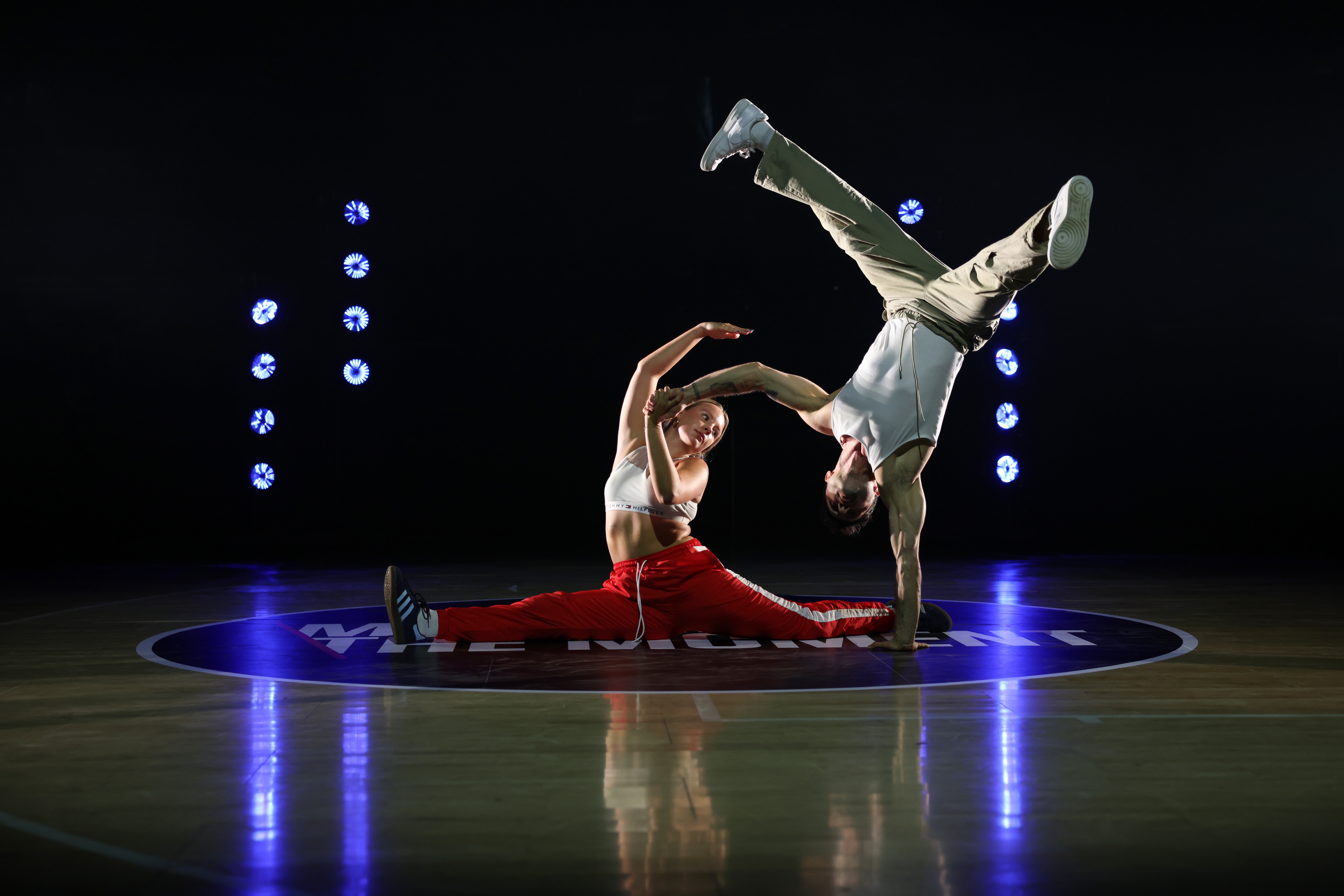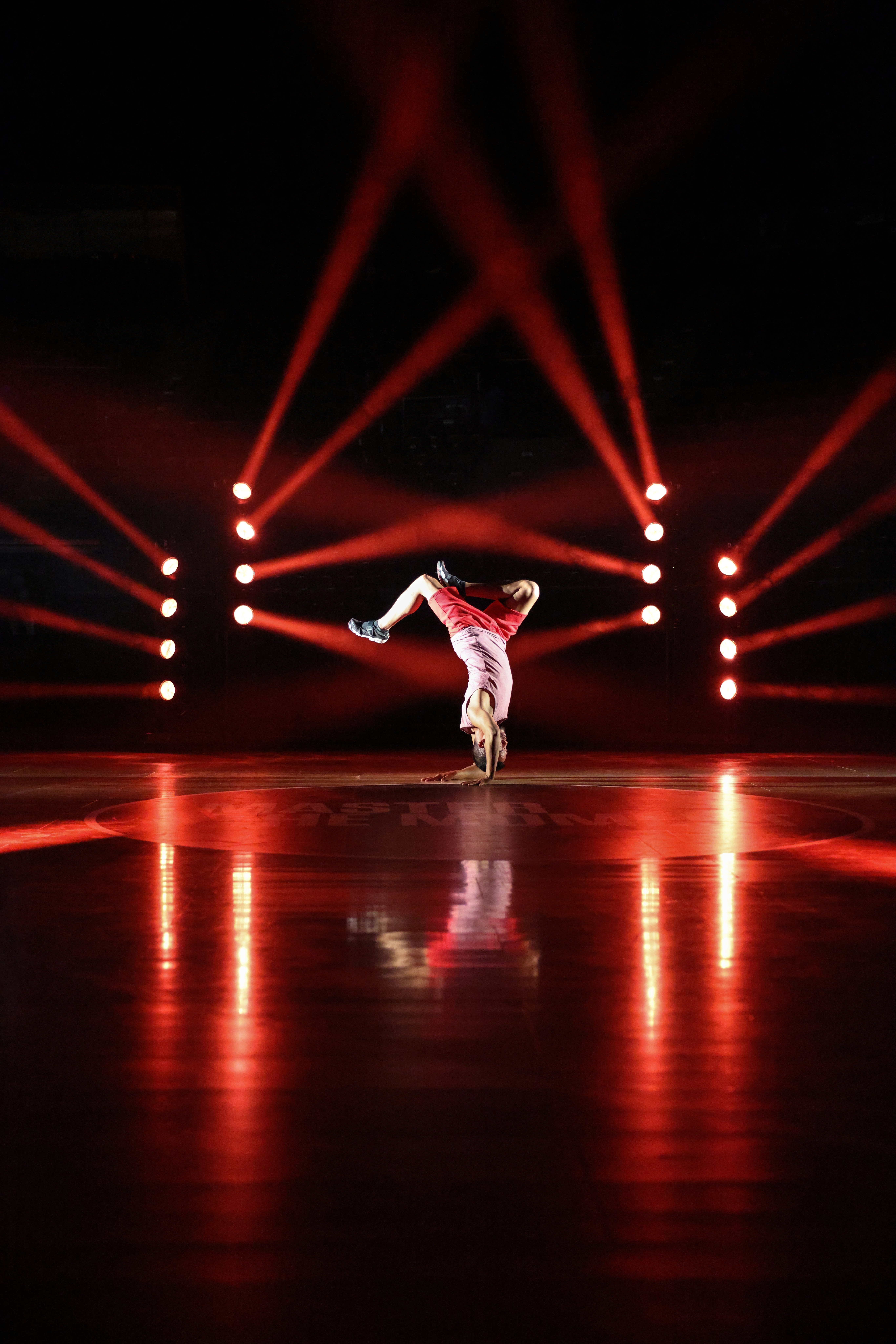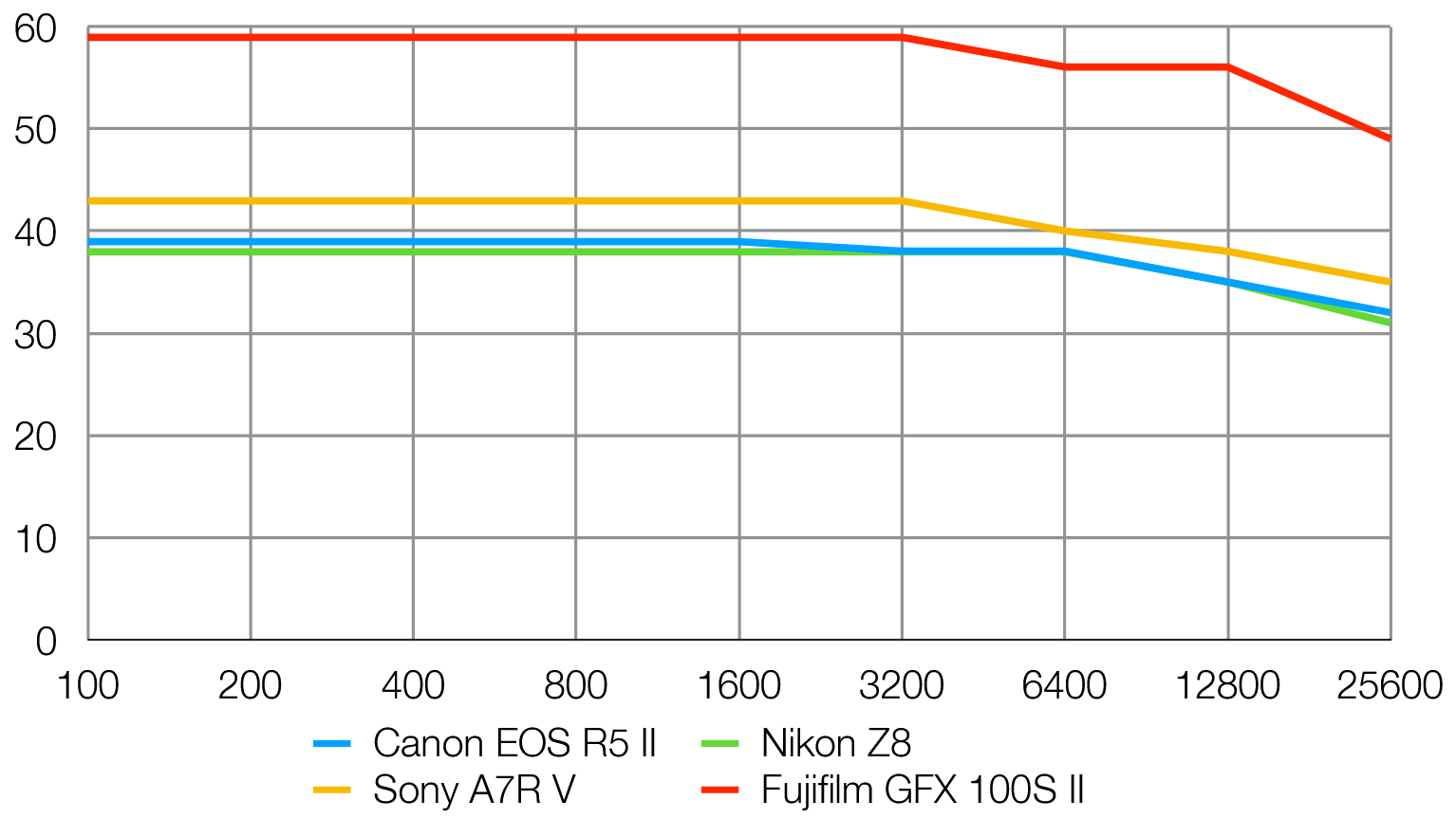Digital Camera World Verdict
The Canon EOS R5 Mark II does exactly what I want it to do. Which is everything the original R5 did – just bigger, better, more. In-camera 180MP upscaling and 2-stop denoising, faster 30fps burst speed, 8K 60p RAW, C-Log2, killer AI-powered predictive autofocus, reduced rolling shutter, Eye Control AF, 8.5 stops of image stabilization, pre-capture for stills and video, Smart Controller, Multi-Function Shoe, full-size HDMI port… quite simply, this is Canon's ultimate camera.
Pros
- +
180MP In-Camera Upscaling
- +
8K 60p RAW video
- +
30fps burst shooting
- +
Predictive AI autofocus
Cons
- -
Some banding in tough light
- -
Upscaling for JPEG/HEIF only
- -
Noise reduction is fiddly
Why you can trust Digital Camera World
The Canon EOS R5 Mark II has one hell of an act to follow. The original R5 was the best camera that Canon has ever made – in fact it was so good that, despite being launched back in 2020, it's still better than almost any camera on the market today. Let's be honest: the Z8 and Z9 might be Nikon's flagships, but in terms of specs they're basically on par with the OG R5.
Beating its four-year-older brother is no mean feat, then, but the Canon EOS R5 Mark II manages more than just being an obligatory update: this is a truly transformative camera that shifts all the goalposts (having tracked them with its new ball-detecting autofocus) and proceeds to score thunderous goal after thunderous goal.
Neural net-powered in-camera upscaling and denoising, monster resolution for stills and video, better-than-ever image stabilization, never-before-seen autofocus tech that is lightyears ahead of the competition… the measuring stick just changed around here.
Note: These images were shot on pre-production Canon beta sample models, final image quality may vary.
Canon EOS R5 Mark II: Specifications
| Sensor | 45MP back-illuminated full frame stacked CMOS sensor | Row 0 - Cell 2 |
| Lens mount | Canon RF | Row 1 - Cell 2 |
| Autofocus | Dual Pixel Intelligent AF cross-type, 5850 AF points stills / 4500 AF points movies | Row 2 - Cell 2 |
| Image stabilization | 8.5 stops center, 7.5 stops corners | Row 3 - Cell 2 |
| ISO range | 100 to 51,200 (exp 50 to 102,400) | Row 4 - Cell 2 |
| Video | 8K 60p, 4K 120p, 2K 240p, FullHD 240p | Row 5 - Cell 2 |
| Viewfinder | 0.5-inch OLED, 5.76 million dots, 120 / 60fps, 0.76x magnification, Eye Control AF | Row 6 - Cell 2 |
| LCD | 3.2-inch TFT, 2.1 million dots | Row 7 - Cell 2 |
| Memory | 1x CFexpress Type B (up to 2TB), 1x SD USH-II card | Row 8 - Cell 2 |
| Max burst | 30fps electronic (200 JPEG or 93 RAW CFexpress / 86 RAW SD), 12 fps mechanical (760 JPEG or 230 RAW CFexpress / 95 RAW SD) | Row 9 - Cell 2 |
| Connectivity | Wi-Fi (6G / 5G / 2.4G), Bluetooth, USB-C, HDMI, ethernet, microphone, headphone, N3 remote terminal, PC Sync output, GPS, Multi-function Shoe | Row 10 - Cell 2 |
| Size | 138.5 x 101.2 x 93.5mm | Row 11 - Cell 2 |
| Weight | 656g body only / 746g with card and battery | Row 12 - Cell 2 |
Canon EOS R5 Mark II: Key features
(Due to scheduling issues, I will be expanding on this review over the next couple of weeks as there is a lot of information to share. For now, I'll break down the most pertinent points. There's also a lot of common tech with the Canon EOS R1, so you may see some overlap in the features.)
The basics are all in the specs above, but there is much more to this camera than meets the eye.
I've already mentioned the Neural network Image Processing, which uses AI algorithms and deep learning to enable features like In-Camera Upscaling (which turns standard 45MP images into monster 180MP files) and High ISO Noise Reduction (which denoises images by 2 stops).
The best camera deals, reviews, product advice, and unmissable photography news, direct to your inbox!
These kinds of computational features often sound like a gimmick, but I promise you they're not. I've written a standalone piece on why I think these in-camera AI features are going to change everything – I highly recommend you check it out as it explains the process and includes samples to illustrate the kinds of results you can expect.
Speaking of AI, we need to talk about the new autofocus systems. There are the usual granular improvements and refinements, and horses and airplanes have been added to subject detect, but trust me – the new stuff is way better than that.
First up is Action Priority mode, which works with any sport featuring a circular ball that's constantly in play – and includes dedicated modes for basketball, soccer and volleyball. Canon has trained this with deep learning AF to recognize body movements and so it can not just track the player who has possession, it can also predict where the ball is going next and thus always focus on the right person.
The camera will recognize a spike in volleyball, and understand that the ball is likely to catapult across court. It will recognize an alley oop in basketball, and know that a player is about to receive a lob before throwing down a jam. As long as there's a ball on the court or field, Action Priority will know where to focus – unless you tell it otherwise.
One of the ways you can do so is via Registered People Priority, a mode that takes face detection to the extreme. You can register the faces of up to ten people, either by taking their photo in person or by taking a photo of them on the internet. The camera will then recognize their face and automatically jump to it if it appears in the frame.
What if more than one of your Registered People is in the frame? Well, that's where the Priority part comes in: you rank those ten faces in order of priority. For example, if you're photographing sport you can assign the home team's star player to number one, the opposing team's star to number four, and the home coach to number ten. At a wedding, the bride and groom are one and two, then important guests follow. Or news reporters can prioritize celebrities or politicians at media scrums.
The camera will detect any registered face, and prioritize the highest ranked – while also giving you the option to quickly flick between them if you need. This is all made possible by Canon's new dedicated Digic Accelerator chip – a secondary processor that works in tandem with the latest Digic X processor to deliver the evolved Dual Pixel Intelligent AF system, offering AF and tracking computation at up to 60fps with the electronic shutter.
This tag team not only facilitates things like Action Priority and Registered People Priority, it also provides unprecedented stickiness to the subjects it detects and tracks. I know that all camera systems promise to be able to follow subjects even when something obstructs the view, but the Canon EOS R5 Mark II actually does it.
I prioritized the face of a single player in a three-on-three basketball game; even when he was on the other side of the court being smothered by the defense, and even with other players and even a spectator frequently blocking my view, the camera always held true and stuck with him – even when his face was tiny in the frame and barely visible beneath an armpit. It even recognized the back of his head!
The advanced AF subroutines are complemented by an upgraded version of the Eye Control AF system that debuted on the Canon EOS R3. The technology is better than ever, enabling you to move your focus point around the viewfinder simply by moving your eyes – read here for an explanation of how it works.
As you'd expect of the first consumer camera series to boast 8K video, the Canon EOS R5 Mark II doubles down on high-resolution video.
The camera can capture 8K DCI Lite RAW at up to 60p, 8K DCI and UHD at up to 30p, 4K DCI SRAW at up to 60p, 4K DCI and UHD at up to 120p, and 2K DCI and FullHD at up to 240p – and all high frame rates now capture audio. There are also 35mm crops for 4K DCI and UHD up to 60p, and 2K DCI and FullHD up to 240p.
The camera is more integrated into the Cinema EOS system than ever, offering Canon Log 2 and 3 with Canon 709/BT.709 Std, PQ/HLG and HDR movie mode, along with custom picture, proxy recording, LPCM / 24-bit / 4-channel audio, and finally a full-size HDMI port and tally lamp (with "red box" tally indicator on the rear screen).
How about the overheating woes that blighted the launch of the OG R5? Well, the internals have been designed with individual graphite sheets for the sensor and card slot boards to dissipate heat to the exterior, with the boards for the card and the sensor and engine being separated by an aluminum plate.
In addition, a passive cooling system incorporates exhausts on the body and vents that run through the camera to allow air to move through and heat to escape. There is also an external cooling fan grip (one of three different grips, actually) that turns the passive cooling system into an active one, by blowing air through the vents and cooling the camera.
This results in enviable recording times before the camera starts to overheat:
| Resolution | Camera | With Fan at High |
|---|---|---|
| 8K 60p RAW LT | 18 mins | 21 mins |
| 8K 30p Long GOP | 26 mins | 106 mins |
| 4K 120p Long GOP | 22 mins | 26 mins |
| 4K 60p Long GOP | 45 mins | No restriction |
| Resolution | Camera | With Fan at High |
|---|---|---|
| 8K 60p RAW LT | 18 mins | 21 mins |
| 8K 30p Long GOP | 37 mins | 120 mins+ |
| 4K 120p Long GOP | 22 mins | 26 mins |
| 4K 60p Long GOP | 120 mins+ | No restriction |
Canon EOS R5 Mark II: Performance
I'll be filling this section out a lot in the coming weeks, but for now my short summary is simply "WOW". Shooting 45MP images at 30fps is nothing new in the current camera market, but shooting 45MP images at a consistent 30fps with consistent autofocus is like manna from heaven.
I've repeatedly said how Dual Pixel AF II is the best autofocus system in the world, but that milestone has just been left in the rear view mirror: Dual Pixel Intelligent AF is simply the standard by which all autofocus systems will now be judged.
I've seen predictive AF algorithms before, in the Sony A9 III – and I felt the system was pretty clever, but was too easily duped by twitch movements that zigged when it expected them to zag. Action Priority, though? Oh my, this is almost like the way the camera sticks to your player while you're playing 2K.
I was fully expecting this system to have blind spots, so I did my best to find them. The video Canon showed me, depicting the camera capturing an alley oop with player-perfect focus, looked too good to be true. So when I heard two ballers call for an oop during their pickup game I made sure my camera was pointing in the right direction.
Holy crap. Sure enough, the ball handler lobbed the ball in the air, over the head of the defender, and his teammate leaped to catch it in midair and complete the play with a slam dunk. And the R5 Mark II tracked and kept focus during every frame of it. That. Is. Impressive. Most AF systems get fooled by plays like this, as it's exactly the "zagging instead of zigging" I was talking about. Nope, not here.
I've already waxed lyrical about the Registered Person Priority, but I haven't mentioned the other AF input: Eye Detect AF. This is an evolved version of the technology in the Canon EOS R3, which features an oversized electronic viewfinder packed with infrared blasters that can track the movement of your eyeball.
Once calibrated, simply look around the finder and it will hover an AF point over whatever you're looking at; simply half-press the shutter et, voila, you've got a "hotkey" to snap focus wherever you want it, as fast as you can look at it. I was impressed by this tech on the R3, but it's easily twice as good here – much more responsive to granular movement, and it has a much longer detection range. Which means that I, as a glasses-wearer, no longer have to smoosh my face as close to the finder as possible.
Again you can check out my in-depth thoughts on the in-camera upscaling and denoising, but the TLDR is that they're both ridiculously good – and I think they are going to transform the way we think about resolution and ISO sensitivity in cameras from here on out.
The only minor criticism I have of the camera right now – and bear in mind I was using a prototype camera running beta firmware – is that I experienced some minor banding when shooting with the electronic shutter in extremely low light conditions, when the scene and subjects were lit exclusively with pulsating nightclub spotlights.
This may well be a sync / flicker issue, as I didn't have time to do much setup before the performance started, but you can see the result in some of the breakdancing images on this page. It's hardly a problem, but I'll be keen to see if I can replicate the phenomenon in the real world with a finished production model.
Canon EOS R5 Mark II: Sample images
Canon EOS R5 Mark II: Lab results
For our lab data comparison we compared the EOs R5 II to its main rivals from Nikon and Sony: the Z8, and the A7R V. We also thought it'd be interesting to see how Canon's megapixel monster stacks up against the 102MP, medium format Fujifilm GFX 100S II. This camera isn't that much bigger than the Canon, and it doesn't cost a lot more to buy.
Resolution (line widths/picture height):
The R5 II performs as we'd expect for its 45MP resolving power, tying with the Nikon Z8, but capturing a little less detail than the 61MP A7R V. The 102MP Fujifilm is in a class of its own though.
Dynamic range (EV):
Dynamic range is a measure of a camera's ability to record extreme brightness ranges and still retain detail in the brightest and darkest parts of the scene. It's measured in EV (exposure values, or 'stops').
All four cameras are quite closely matched when it comes to capturing dynamic range. The R5 II is a little less impressive than the Sony and Fujifilm cameras at low to mid sensitivities, but at ISO 6400 and above there's not a lot to separate them.
Signal to noise ratio (decibels):
This test compares the amount of random noise generated by the camera at different ISO settings as a proportion of the actual image information (the 'signal'). Higher values are better and we expect to see the signal to ratio fall as the ISO is increased.
When it comes to image clarity, the R5 II narrowly beats its full-frame rivals, generally producing images with the least obtrusive noise levels, though the difference at very high sensitivities is negligible. But as in our resolution test, stepping up to medium format again produces a clear advantage: despite its extra megapixels, the GFX 100S II still manages to generate less noise at all tested sensitivities.
Canon EOS R5 Mark II: Verdict
I use a lot of cameras in my job, but this is simply the best camera I've ever used. Bold words, but the Canon EOS R5 Mark II backs them up.
All the speed you need, all the resolution you could want, and an autofocus system you've only dreamed of. It needs to pass a few more tests, of course – not least our in-depth lab tests to put that new sensor through its paces. And as noted, I'll be adding to this review with more thoughts along with video samples.
For now, though, there's a new sheriff in town. Canon has done it again, and the R5 series remains the undefeated and undisputed champion.





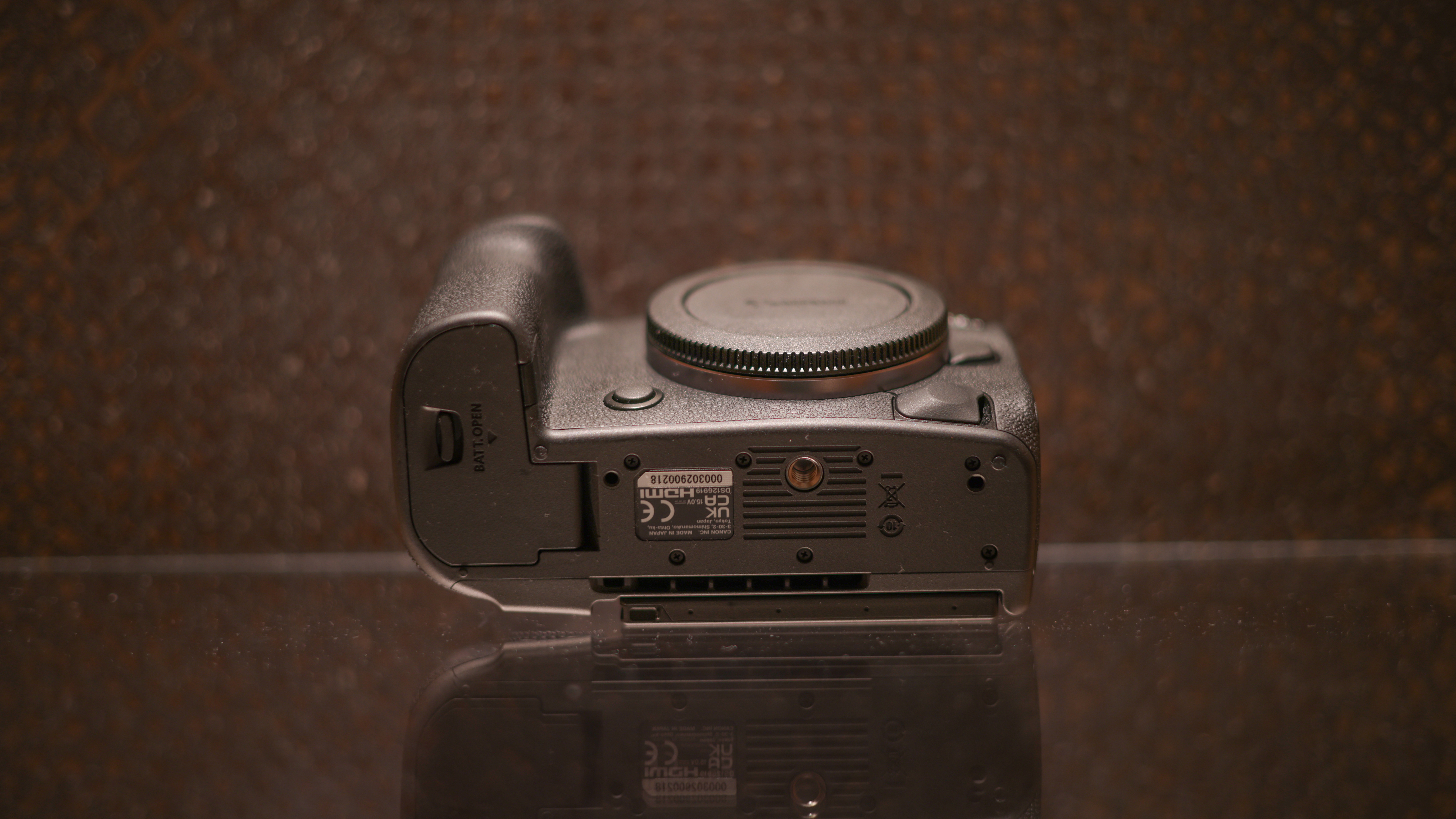



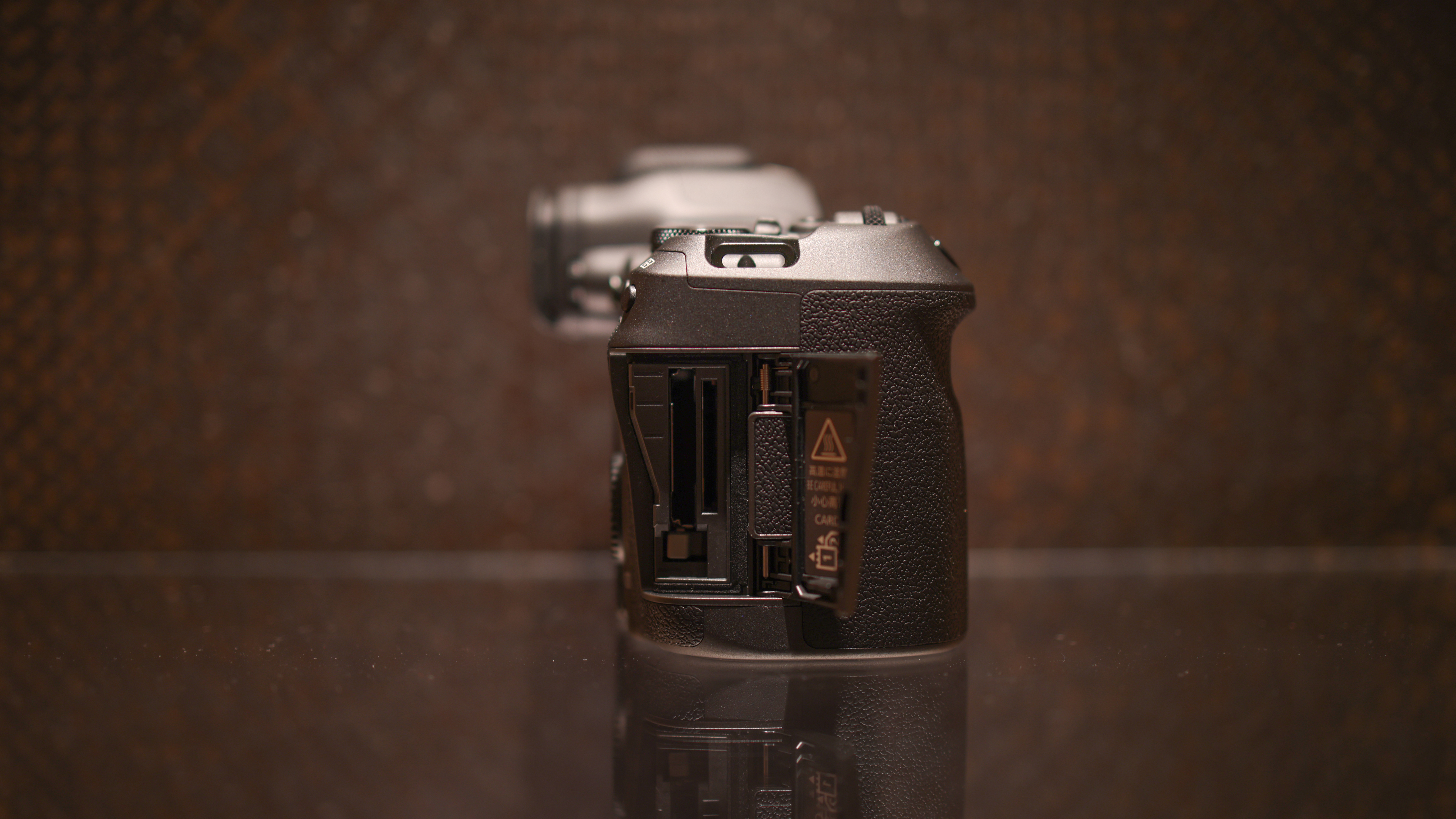



You're probably going to be interested in the best Canon cameras, along with the best Canon RF lenses for EOS R bodies like this one. You might also be interested in the best 8K cameras and the best hybrid cameras.

James has 25 years experience as a journalist, serving as the head of Digital Camera World for 7 of them. He started working in the photography industry in 2014, product testing and shooting ad campaigns for Olympus, as well as clients like Aston Martin Racing, Elinchrom and L'Oréal. An Olympus / OM System, Canon and Hasselblad shooter, he has a wealth of knowledge on cameras of all makes – and he loves instant cameras, too.









